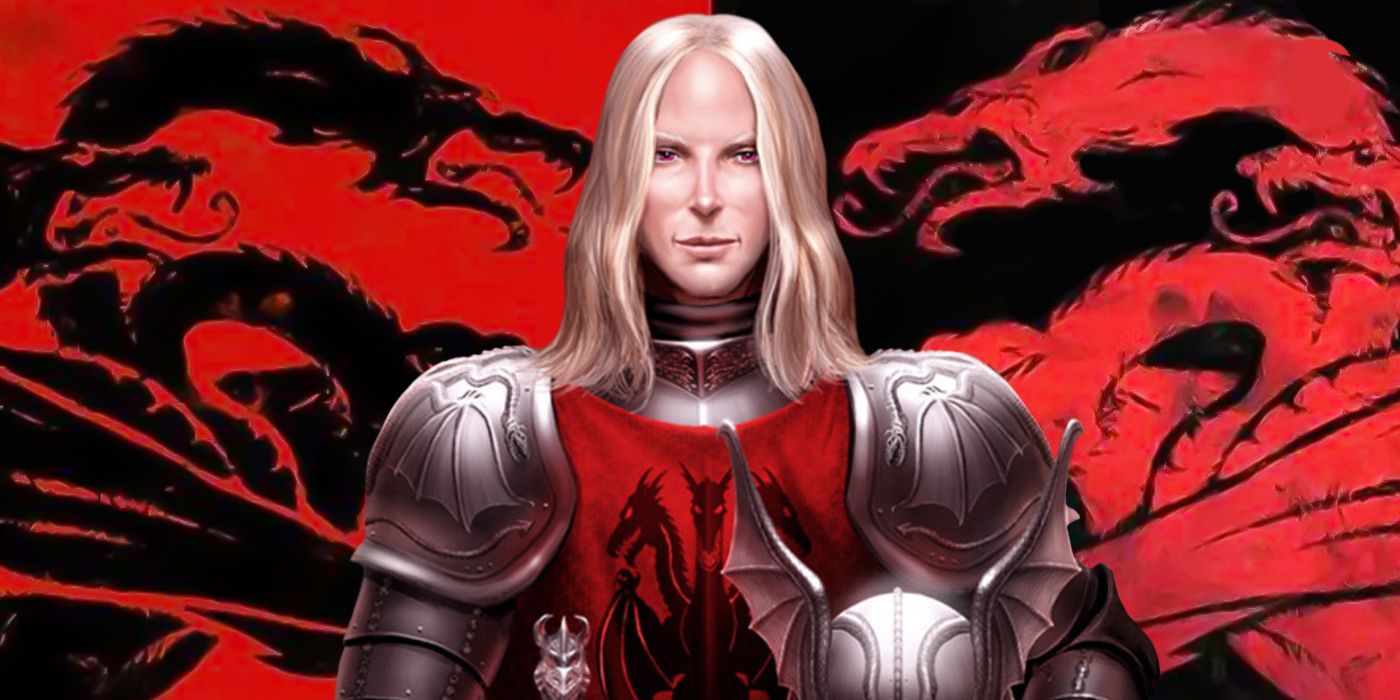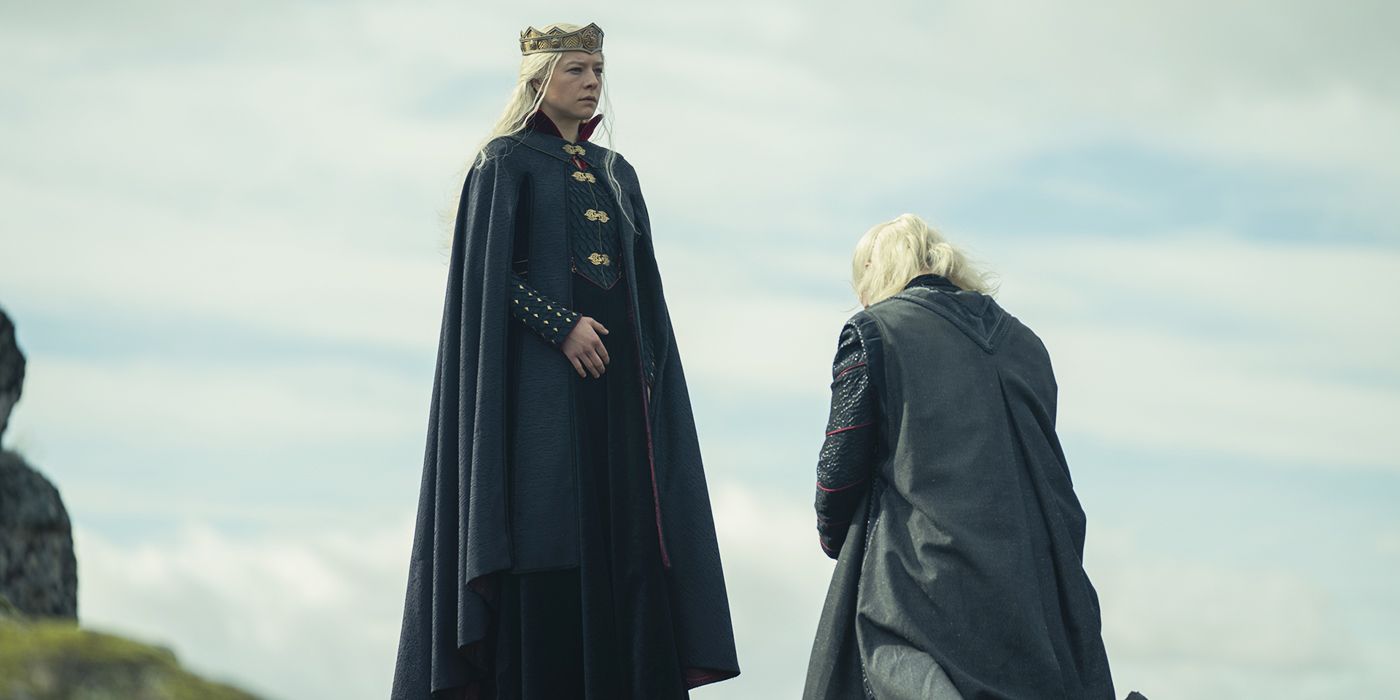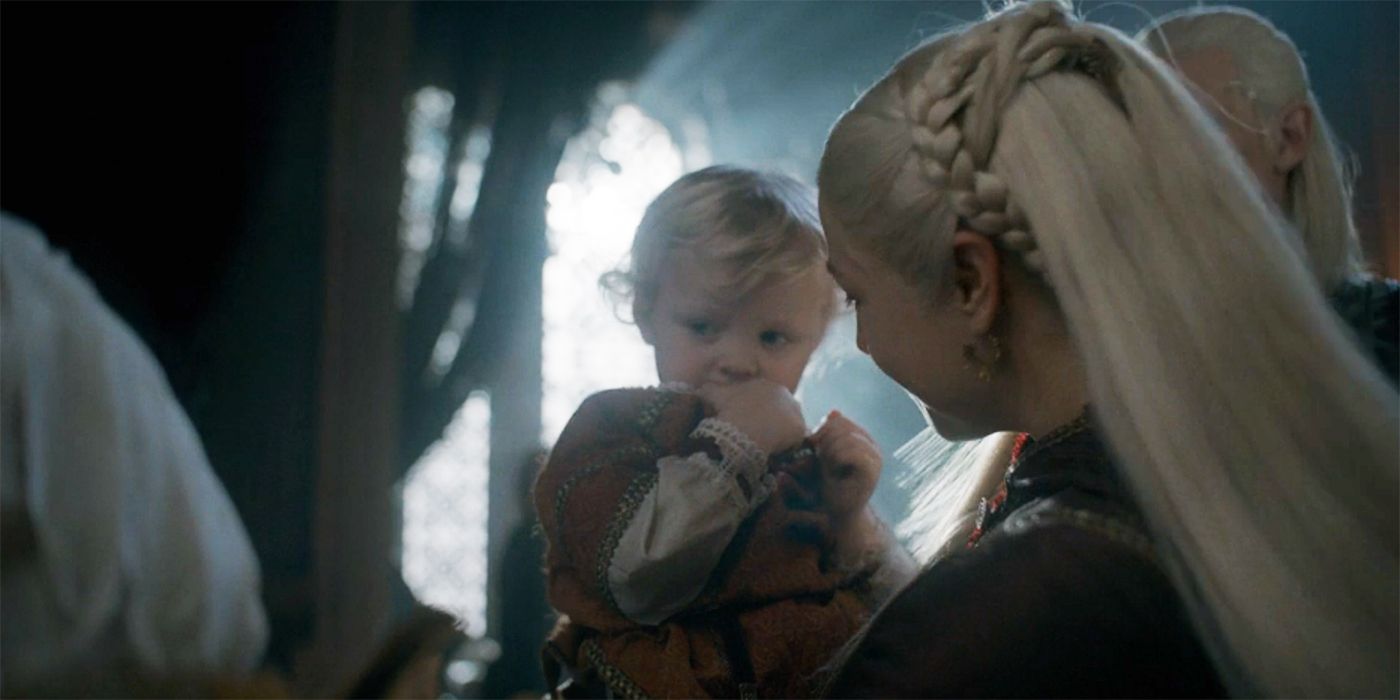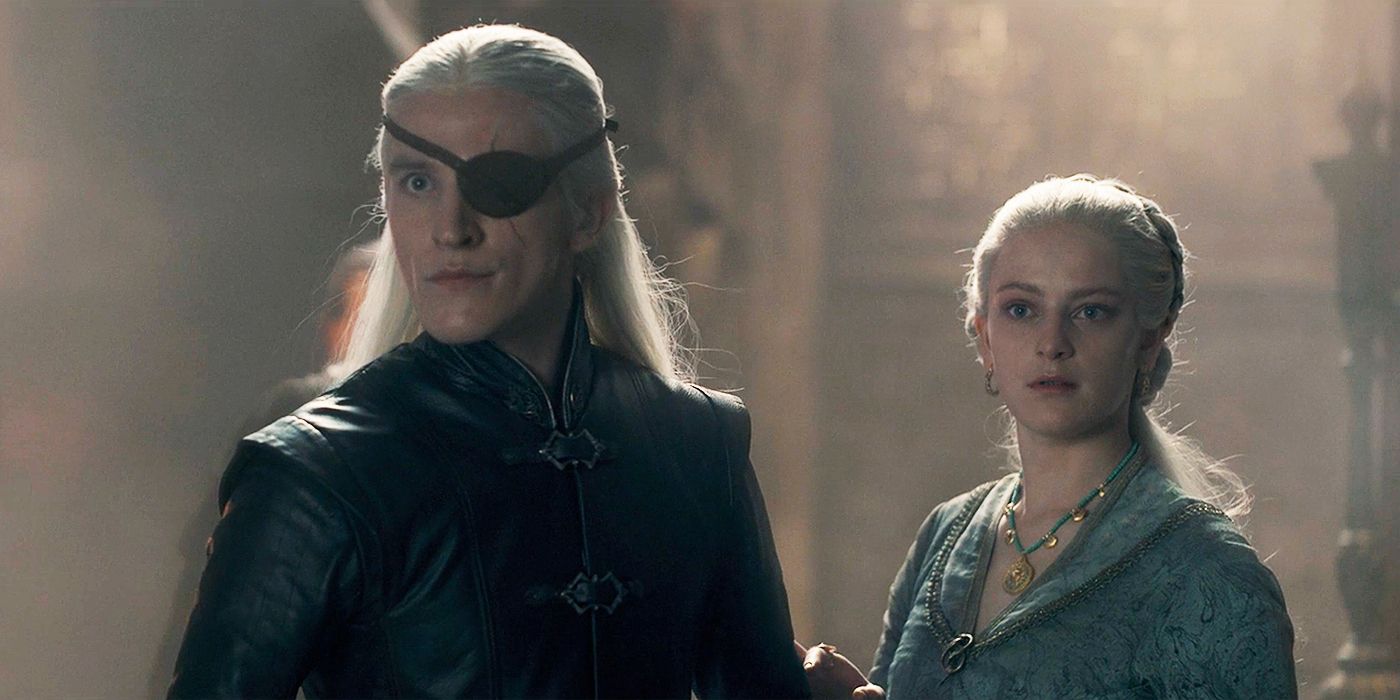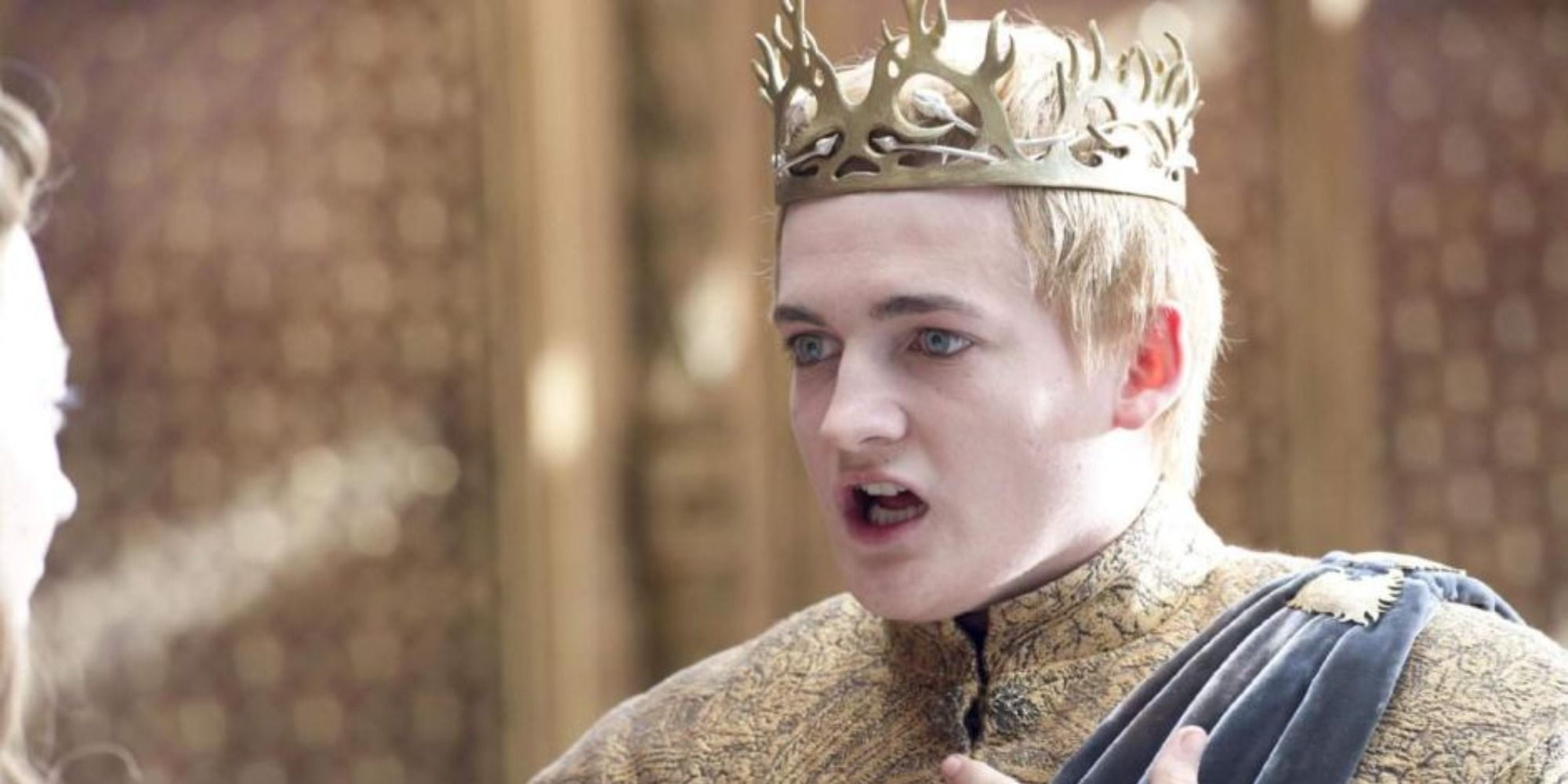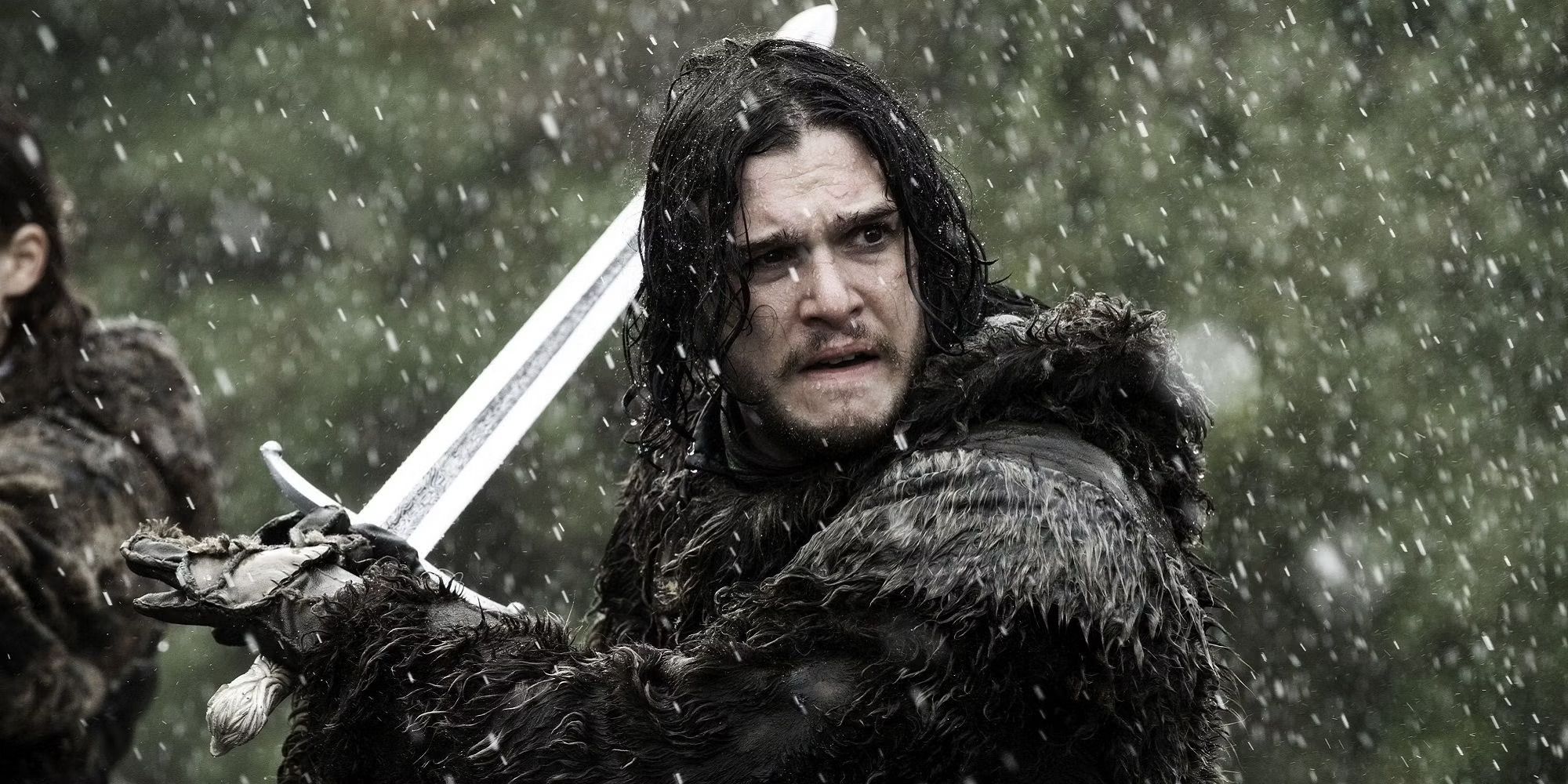Editor's Note: The following contains spoilers for House of the Dragon and extensive spoilers for the book Fire & Blood. An empire wrought with familial antagonism, political turmoil, and incestuous matrimonial unions does not a thriving kingdom make. It, however, unquestionably does make an exciting story, and an unforgettable one at that. When the blockbuster series came to an end, HBO was searching for its replacement and looked both backward and forward in time in Westeros. As the timeless history of Westeros extends back over twelve thousand years, it makes sense for them to look beyond the story of Jon and Daenerys, although, of course, theirs made for a pretty entertaining and devastating course of events. 10,000 Ships, The Sea Snake, and The Golden Empire are just some of the much-anticipated Game of Thrones spin-offs supposedly already in the works.
One of the delights of reading George R.R. Martin’s immensely expansive and rich A Song of Ice and Fire is that there is always another story to look forward to – the world the medieval-fantasy author has brought into existence is so vast and it is ever-expanding. But with so many stories to tell, which one would make for a story as good as its predecessor and the recent House of the Dragon, if not more? Which story would elicit the same addictive storytelling as Game of Thrones and House of the Dragon? The famous Blackfyre Rebellions (yes, there was more than one) are some of the most action-packed and engaging stories written by Martin and the rebellions are the perfect candidates for future series that features one of our favorite Westeros houses.
The Blackfyre Rebellions Would Tie Into Both Shows
From great characters to mind-boggling plot twists to full-throttle battles (something Game of Thrones fans live for) to relationships that would make your stomach turn, the Blackfyre Rebellions have something for everyone, whether you love a medieval tale or you just want to see people go at each other's throats. If you don't want to be spoiled for the book ending of House of the Dragon read no further, but if you're curious as how a sequel series could go, read on!
The dance of dragons exacts a disastrous toll on the Targaryens, making one of the most powerful houses of Westeros extremely vulnerable to usurpers and rebellions — having watched Game of Thrones, we already know Robert Baratheon will eventually take the throne from the Mad King. After Aegon II (Tom Glynn-Carney) feeds Rhaenyra (Emma D’Arcy) to his dragon, he himself succumbs to death, likely poisoned in a cunning plot devised by Larys Strong (Matthew Needham) and Corlys Velaryon (Steve Toussaint). With Rhaenyra and Aegon II dead, Aegon III Targaryen, one of Rhaenyra’s surviving sons with Daemon (Matt Smith), takes over the Iron Throne. He marries Aegon II and Helaena's (Phia Saban) daughter Jaehera. Although this temporarily unites the Black and the Greens after the war, Jaehaera is unable to bear a child and she dies two years after the Dance.
In the end, the line that grows out of Rhaenyra’s marriage to Daemon comes to rule over Westeros. Aegon IV, Rhaenyra's grandson through her second son with Daemon, Viserys II (yes, this is very confusing) claims the Iron Throne eventually after Aegon III Targaryen, his cousins, and his father. This then makes Daemon Blackfyre (one of the instigators behind the Blackfyre Rebellions) the great-grandson of Rhaenyra and Daemon. With a close connection to some of our favorite House of the Dragon characters, it's only natural to assume that those who loved the Dance would absolutely not get enough of the Rebellions.
How Did the Blackfyre Rebellions Start?
No Westeros story can possibly exist without chaos and conflict – the driving theme behind George R.R. Martin’s medieval fantasy series. As the name might imply, the Blackfyre Rebellions are… well, rebellions – full of contention, discord, and in-fighting among the Targaryens that lead to a number of battles, each more barbaric than the other. Before a full-fledged rebellion, however, there is always a spark, which, when not extinguished, turns into a full inferno. So what, or rather who, really started this new familial conflict that would go on to claim so many lives?
To understand this, we have to go back to Aegon IV. He was the first-born son of Viserys II, Rhaenyra and Daemon's second son and who we see briefly in Episode 8 of House of the Dragon when Rhaenyra introduces her father to her new children. Often called The ‘Unworthy King’, Aegon IV hated his wife Naerys, who, not surprisingly, also happened to be his sister. By default, then, it would seem, he also hated the child he had from his sister-wife – Daeron II Targaryen. Much like the theory about Aegon II's own children, some suspected that Daeron II was the son of Naerys and Aegon IV's other brother, Aemon, which could be the source of why the king disliked him. Leave it to the Targaryens to have love triangles within their own immediate family.
Being a terrible king devoted only to his own pleasures, Aegon IV spread awful rumors about his wife and son, and in doing so, weakened Daeron’s claim on the Iron Throne. The Unworthy King also happened to have a number of mistresses and without any real contraceptives other than moon tea, a number of illegitimate children started coming out of the woodwork. His favorite bastard child was Daemon, after his great-grandfather, who was simultaneously seen as the ‘wonder and terror’ of his age. Daemon’s very name was meant to be a warning, and he certainly didn’t give off an attitude that indicated otherwise.
Skilled in swordsmanship, Daemon had been a prodigy since childhood. So much so that Aegon IV gave him the famous Blackfyre Sword – the legendary Valyrian steel sword that every Targaryen king had wielded since the Conquest. Upon receiving Blackfyre, Daemon became the first of the five Blackfyre Pretenders – a series of claimants to the Iron Throne of the Seven Kingdoms of Westeros. Giving the legendary sword to Daemon was arguably one of the worst things Aegon IV did as a ruler, which is saying something, given the very title of the king. Daemon was a bastard, not a prince. The Blackfyre Sword should have been given to his older half-brother, the rightful heir to the Iron Throne. While a number of factors led to the Blackfyre Rebellion, this is often seen as the moment that started it all.
Aegon IV Fulfills the Stereotype of an Awful Westeros King
Aegon the Unworthy King is, in many ways, the main cause behind the Blackfyre Rebellions. Not only did he pass on one of the greatest symbols of the Targaryens to his illegitimate child in the stead of the rightful heir to the throne, but he also legitimized all his other bastard children on his deathbed, giving them the right to claim the Iron Throne for themselves at the cost of their half-siblings’ lives. While sibling marriage was common among Targaryens, his indulgence in multiple mistresses left him with a horrible legacy. However, that doesn't mean he wouldn't be a compelling character on screen. Granted he might only ever evoke feelings of hatred and frustration, but he fulfills an essential Game of Thrones role – the fool who overestimates his own significance in the grand scheme of things. Awful kings aren't limited to just the Targaryens, we're looking at you Joffrey, but they are a recurring theme for the Iron Throne.
The Blackfyre Rebellions Have More Incest, More Bloodshed, and More Violence
Game of Thrones is infamous for normalizing, within the parameters of the fictional world, incestuous marriage. Viewers have become desensitized to members of the Targaryen family marrying and even openly supporting sexual intimacy between members of the same family. Therefore, it's no surprise when Aegon IV is married to his sister, Naerys. After having bastards with several mistresses, Aegon IV comes to hate his sister-wife and accuses her of being unfaithful to him. As mentioned above, there were rumors of her seeking comfort in the arms of her other brother Prince Aemon the Dragonknight. Though fans might have mixed opinions about this particular aspect of George R.R. Martin’s world, incest is one of the many things that Martin pulled directly from real-life royalty who also intermarried among each other. Given how fans have come to accept the incestuous relationships in Game of Thrones and House of the Dragon at this point, it’s safe to say that it’s one of the peculiar things about Martin’s world that people will actually find themselves looking forward to.
Ultimately, there were five Blackfyre Rebellions that stretched over a course of 60 years. If Game of Thrones, spanning merely a few years in the history of Westeros, could make for such an entertaining and captivating show, one can only imagine which aspects of the Blackfyre Rebellions would appear on screen. From the very beginning, things seem to go downhill pretty aggressively in this particular tale, and they escalate even more aggressively after Aegon IV dies, thereby sowing the seeds of familial conflict and political unrest. Without the budget-consuming CGI dragons, the Blackfyre Rebellions would fully lean into the violent rebellions. Barbarity and bloodshed, therefore, runs rampant in the Blackfyre Rebellions, and knowing what the medieval-fantasy fans root for, it would undeniably make for a heart-stopping spin-off.

